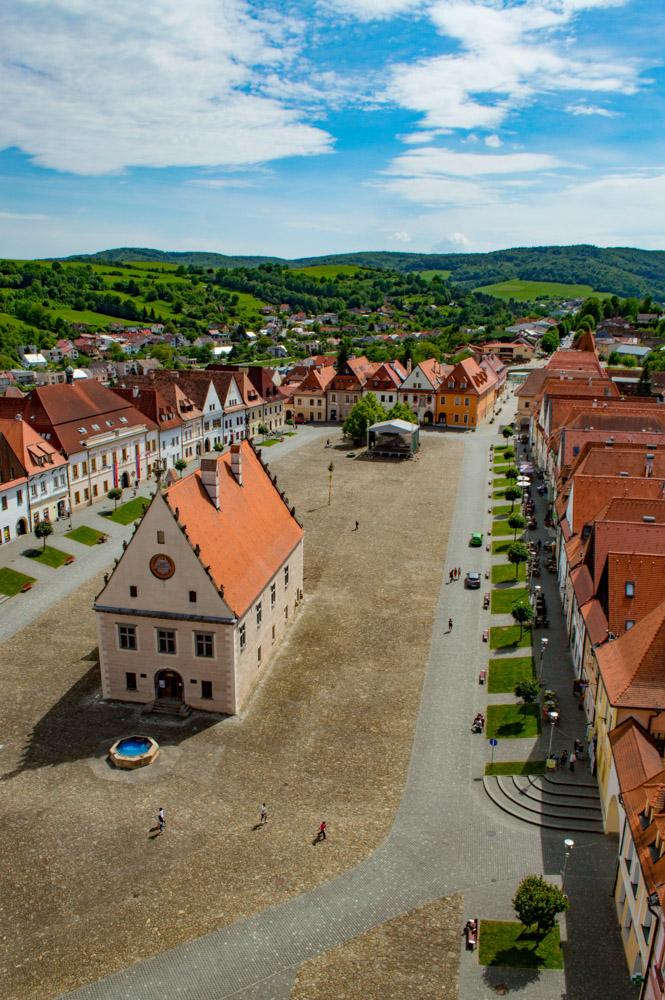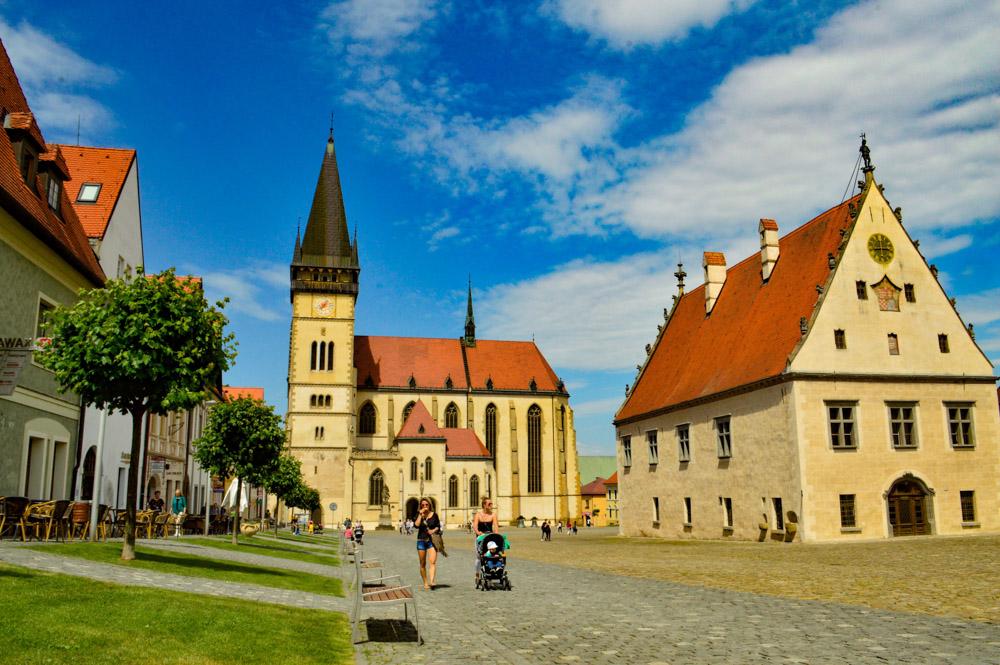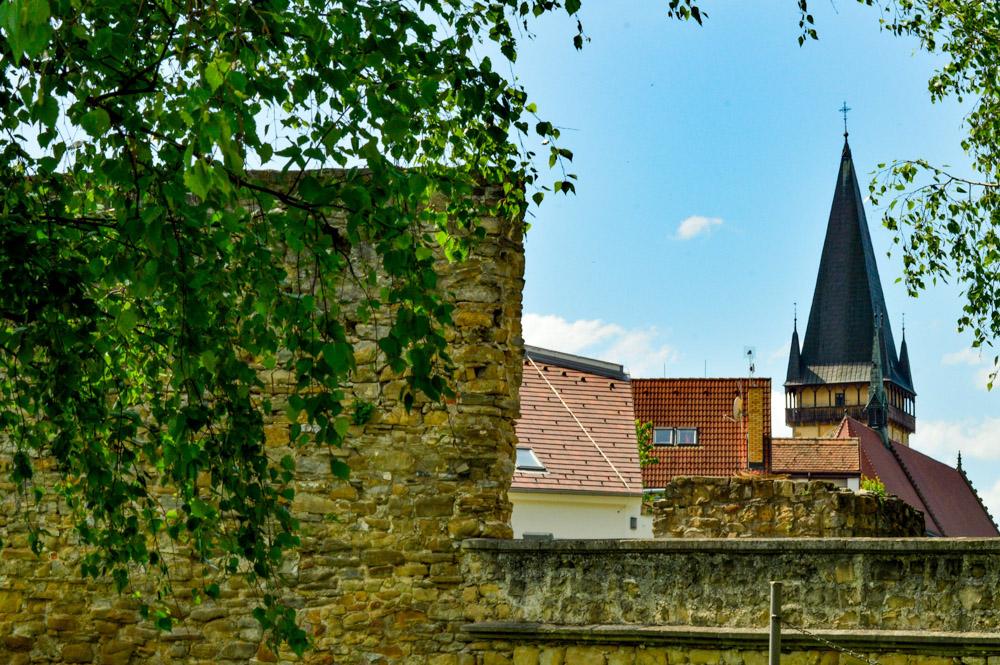“How far these city walls have come,” I thought, gazing from the battlements of Bardejov, over sprawling development, towards the green pastures beyond.
The fortifications of Bardejov’s historic center were erected in 1300s to deter invaders after the city’s great wealth—wealth accumulated from its lucrative trade position between Hungary and Poland. Overtime, the city grew more and more prosperous, eventually being named a royal city by the Hungarian Empire which controlled Slovakia at that time.
This glory lasted centuries, but industrialization and changing politics after WWI resulted in a violent economic decline and Bardejov became no more than an agricultural backwater, its iconic walled center left to deteriorate.
The city was, in a sense, rediscovered in the 1950s and money invested back into its declining beauty. Bardejov became the first city in Czechoslovakia to be given the European Gold Medal by the International Board of Trustees in Hamburg for its restoration efforts. In 2000, the renewed city center also earned a place as an UNESCO World Heritage Site.
Long since made obsolete, the defensive walls of Bardejov do little more today than separate the present from the past—though a worthy defense it is. On one side of the walls, a shopping center and train station funnel the busiest of this small city’s traffic, while on the other pedestrians peacefully stroll, ice creams in hand, along the flawless cobblestone streets. The colorful buildings there-within host everything from butcher’s shops to bookstores to little cafes, but all of them line roads which eventually make their way to the main square. Radničné námestie, in Slovak, is dominated by two structures, the city hall and iconic Basilica of Saint Aegidius. This monumental church holds a wealth of historic alter pieces and other artifacts from the region’s history, though its biggest draw is the tower which… well… towers above the rest of the city.

After I surveyed the chapel and side chambers, the steward of the church opened the door to the tower for me and I began to climb. There is no more medieval of a feeling as ascending a spiraling staircase shorter than you are and no wider than your shoulders. Every so often a tiny window would look past the churches sloped roofs to the city beyond or a small entryway would lead into a musty chamber above the basilica’s arched naves. Part of me wanted to explore these seemingly abandoned chambers, but the other knew that would likely be looked down upon and settled on reaching the top.
The view was simply unrivaled by anything I have seen in Slovakia. (I’ll let it speak for itself.)
Unlike many Slovak cities, Bardejov is preserved to the absolute highest standard. Little advertisement clutters its building’s facades and modern development is forbidden within the historic center. It is a city which has been reminded of past glory and will not allow that to be forgotten again.
Signed,
Andrew


